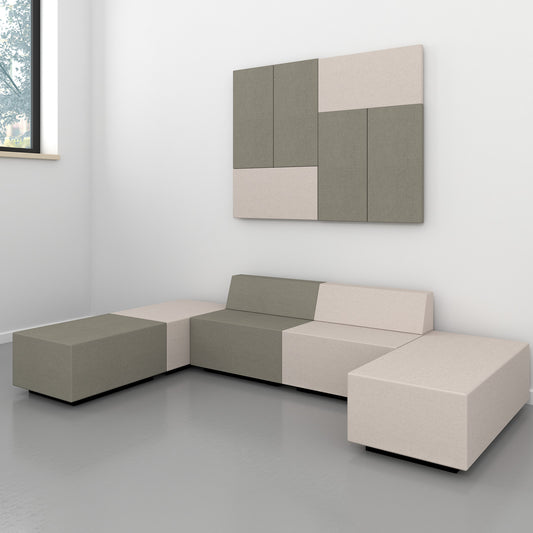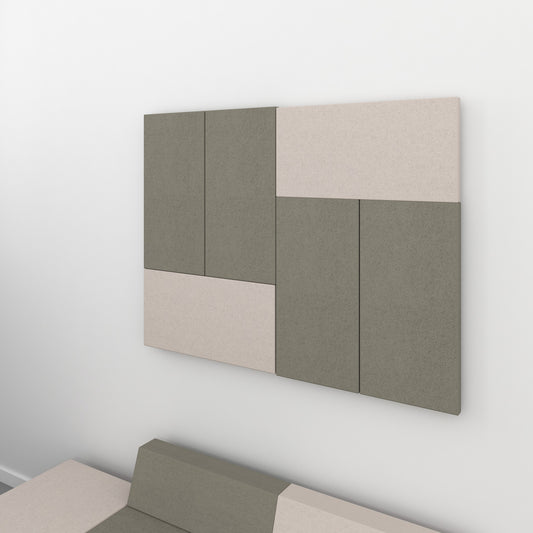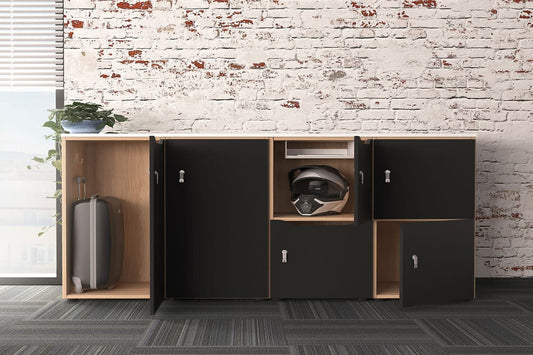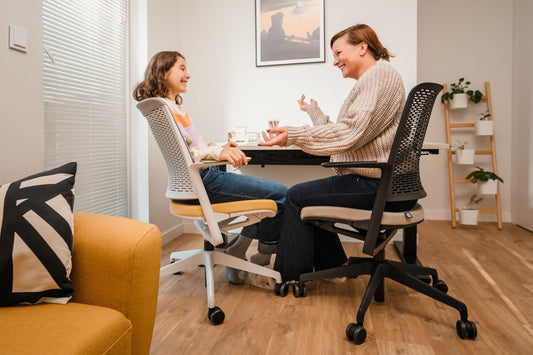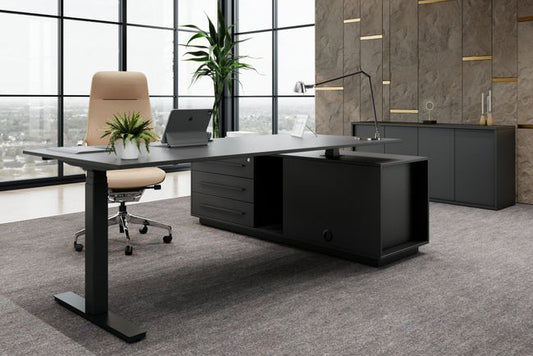Space design and job optimization | Reading time approx. 4 min 🕒
Space design in the office: from dreary to magical
Imagine you enter the office and feel immediately as if you had ended up in Azkaban, where you will rob you of any motivation. The walls are gray, the furniture is uncomfortable and the only green is the mold in the corner. Creepy! Unfortunately, many offices could easily serve as the setting for the next Harry Potter film. But that doesn't have to be. In this magazine article we will show you how you can do with the right one Interior design can transform your office into a homely Gryffindor community room.
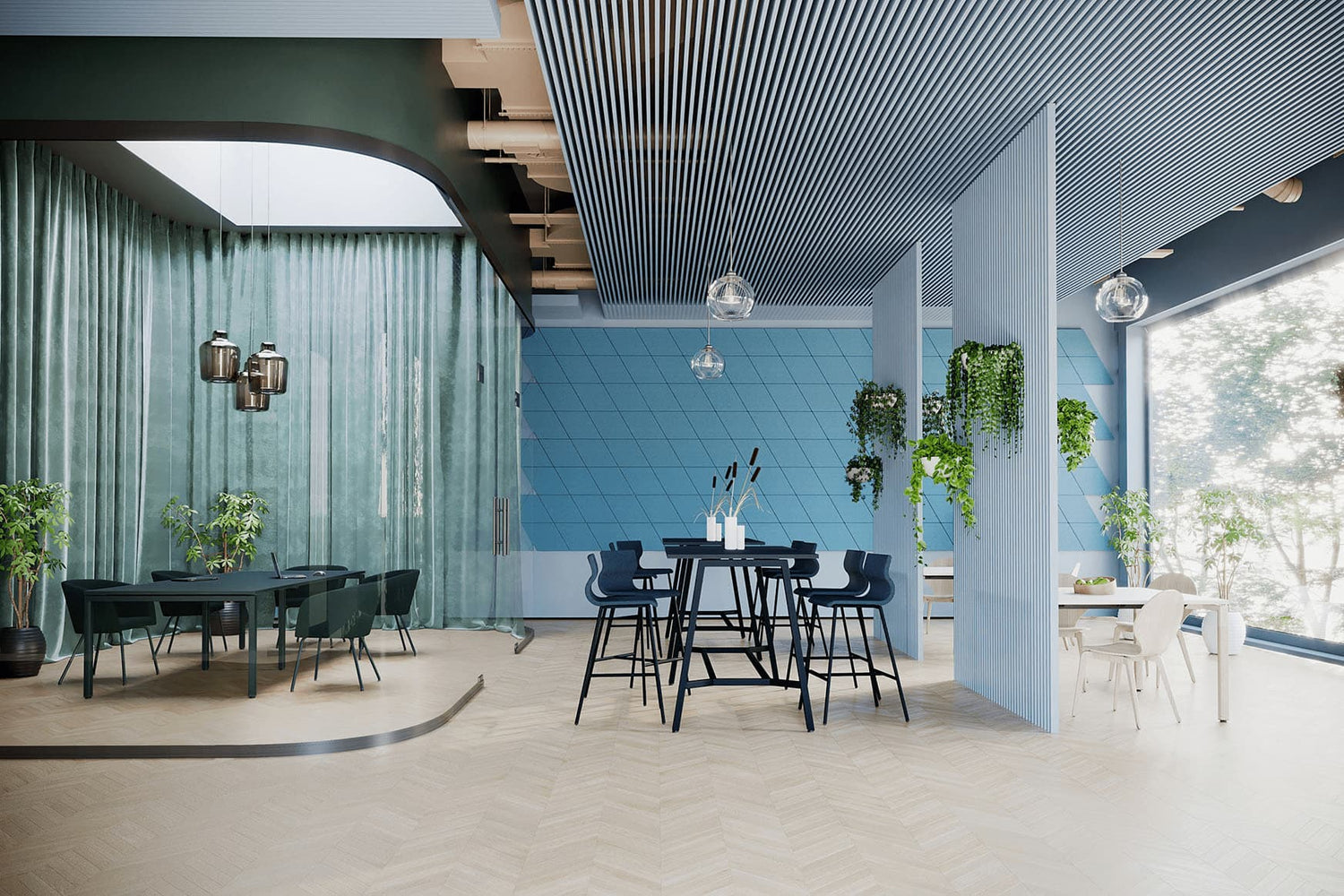
The office design of tomorrow
What does the office of the future look like? New Work, Desk Sharing And Open Space are no longer a new terms. The traditional office is in constant change. An office is more than just a room for working: it is a place of exchange and social interaction. Employees should be productive, but also feel good. In order to create offices that meet these requirements, a well -thought -out interior design is crucial. You know the saying: "Well planned is half won". This is very good for the topic of interior design. Because an optimally designed office is a profit for your employees and therefore also for you. Specifically, the interior design fulfills four functions:
- Ensure functionality: Each room has a clear task, whether a quiet work area, dynamic brainstorming area or relaxed break zone.
- Promote communication: Flexible and multifunctional rooms with mobile partitions and modular furniture enable quick change between open and private areas and promote spontaneous encounters.
- Stimulate creativity: Creative zones with whiteboards, flipcharts and comfortable seating create inspiring environments for strategic thinking.
- Strengthen well -being: Ergonomic furniture as well as well thought-out color and lighting concepts ensure a pleasant and health-promoting working environment.
At a glance at an overview of office space
A well -designed office can make up the difference between a productive day and an endless, distracting nightmare. In order to get the best out of your office, it is important to know the different types of office space and understand how they influence the way of working.
Single offices offer the ultimate retreat for concentrated work. Here employees have their peace to do to do sensitive tasks without being disturbed by colleagues. Ideal for departments such as human resources or finances where discretion and focus are required.
Multi -person office Promote the exchange and cooperation in small teams. These rooms are perfect for groups that have similar tasks or projects because they facilitate communication and at the same time offer a certain amount of privacy.
Combi mill Connect the best of both worlds: open work areas for quick exchange and separate rooms for undisturbed work. This flexibility makes you ideal for companies that need a mixture of teamwork and individual concentration.
Group offices are specially designed for teams or project groups. They offer enough space and equipment for creative work and intensive cooperation. Such a room promotes the close exchange and is perfect for dynamic projects.
Large -scale office rely on open areas that should strengthen communication and team spirit. However, they can also be distracted and cause noise problems, which can affect the concentration.
Distributed Office is the concept of the distributed jobs, in which employees not only work at a physical location, but are also distributed over different locations. This enables flexible work and can both increase productivity and improve work-life balance.
Flexible working worlds: modern concepts of interior design
When designing your office, it is important to respond to the needs of the employees. In today's working world, two concepts of office design have established themselves:
- Zoning: The office space is divided into different zones, each dedicated to specific work processes. Creative work takes place in inspiring areas, while administrative tasks are done in calm zones. This clear structure creates synergies and minimizes distractions.
- Activity Based Working: Employees no longer have a permanent job here, but choose their space free depending on the task. Today a creative space for meetings, tomorrow a quiet corner for concentrated work. This flexibility promotes autonomy and optimizes use of space.
Acoustics & privacy protection
MILA acoustic table partition
1600 - 2000 mm, 650 mm high, VELITO light gray mottled


Top acoustic table partition side panel
595 mm high, reference substances Lucia / Velito / Synergy
DESK acoustic table partition
760 mm high, LUCIA polyester cover
MODUS acoustic ceiling sail
800 x 400 mm, VELITO wool cover
MODUS Acoustic wall panel
Wall cladding, complete system, wool cover Velito - Beige / Braun
SILENT ROOM M - acoustic system
Room-in-room, soundproofing, for 2 people, upholstery fabrics BERTA / VELITO / SYNERGY
MODUS acoustic wall panel
800 x 800 mm wool cover VELITO
MODUS acoustic ceiling sail
1200 x 800 mm, VELITO wool cover
8 practical tips for interior design
The first draft for your office stands and what now? Even with the most modern office concept, your office can act like a dreary storage chamber. For the magical touch, however, it takes nothing more than a little color, decoration and the right indoor climate: Accio well -being oasis! And your office is already transforming into a charming space of wishes in which every employee likes to work. So snap your wand and off you go:
1. Establishment of different rooms
As already mentioned, every room in the modern office has its own function: a well-designed meeting room promotes teamwork, while break rooms with comfortable lounge furniture serve relaxation. The kitchen is a central meeting point for informal exchange over fresh coffee. Space size, equipment, comfort and aesthetics play an important role in setting up your office space. Think about how you can design the room in such a way that your employees can feel good and work productively.
2. Art and decoration
Offices benefit from colorful paintings, sculptures and creative wall hangers. They inspire, promote the creativity of the employees and contribute to a harmonious overall aesthetics. Works of art should be carefully selected so that they match the color and style of stylistically with the rest of the facility and give each room a unique note. In addition, the works of art should reflect the values and culture of the company.
3. The influence of colors
Colors not only serve the decoration, but also influence our mood and productivity:
- Red Can be alarming at first glance, but also radiates energy and activity in the right dosage. Especially in meeting rooms, red color accents can stimulate the mood and promote the exchange.
- Yellow Hit stimulatingly on the retina and minimizes the eye load, which supports focused and productive work. In break rooms, yellow elements have a positive, calming effect.
- Blue is often associated with the sky or the sea and also has a calming effect. Intensive shades of blue promote clear thinking and self -confidence, which is particularly advantageous in calm work areas and retreats.
- White dominated in many offices and is associated with cleanliness and clarity, but can tire your eyes in the long run.
- Neutral colors like Beige, sand or pastel tones are subtle and reserved. They make small offices look bigger and create a pleasant, relaxed work environment.
In summary: warm colors stimulate creativity, but cool colors have a calming effect and promote concentration.
4. A quiet working environment
The biggest enemy of concentration is noise. In order to create a calm working atmosphere, sound-absorbing partitions and acoustic panels can be used, which form not only optical but also acoustic barriers. Special silent rooms can be set up for long conversations or phone calls. These offer retreat for everyone who has to concentrate. In addition, a floor covering with impact sound insulation can significantly reduce the noise level in the office.
5. Sufficient lighting conditions
Light also plays an important role in productive work and health. Light, well -distributed light reduces the eye load. In the case of inadequate lighting, the eyes tire faster, which can lead to loss of concentration and in the long term to chronic complaints. A well thought -out lighting planning includes direct and indirect light. Daily light in particular should be sufficient.
6. The ideal temperature and room air quality
Nobody likes to work in a sauna or an ice cream cabinet. The temperature sensation can vary from person to person, but there are general guidelines that should create a comfortable environment for everyone. For example, a temperature of 20 to 22 degrees Celsius is the standard. The air quality is also crucial. Regular ventilation and a controlled humidity between 40 and 60 percent can significantly improve the indoor climate.
7. Plants for a better indoor climate
Plants not only view your interior design optically, but can also help improve the humidity - ideal for dry, air -conditioned rooms. They also have a calming effect and promote the well -being of employees at the workplace. When choosing the plants, you should take into account the framework conditions and maintenance requirements of the plants. Some plants also thrive in artificial light, others quickly lose their spirit of life without sunlight. For example, birch fig, ivy or the green lily are available for office design. A well thought -out placement of the plants - on desks, on bookshelves, on window sills or in hanging plant holders - the interior design can blur visually and create a calming atmosphere at the workplace.
8. Ergonomic office furniture
Ergonomic furniture is a must for every workplace. Height -adjustable desks And individually adjustable office chairs prevent physical symptoms and promote a healthy attitude in the workplace. In addition to the right equipment, it is also important that employees know how to optimally use their workplace. Seminars and workshops on workplace ergonomics offer valuable tips and help.
Are you unsure of how to get started with the design of your office? Feel free to let our experts Support in space design. Together with you, we plan an overall magical concept for your office including product and color selection. You can take a look at this 2D and 3D draft in a virtual tour from any perspective and if you are satisfied, we will send you a non-binding offer. We look forward to your request!
Trending magazine articles
-
Product Consultation
Lockers in the office
-
Ergonomie und Gesundheit
Proper seating in the office
-
Produktberatung
Recognize the desk quality








